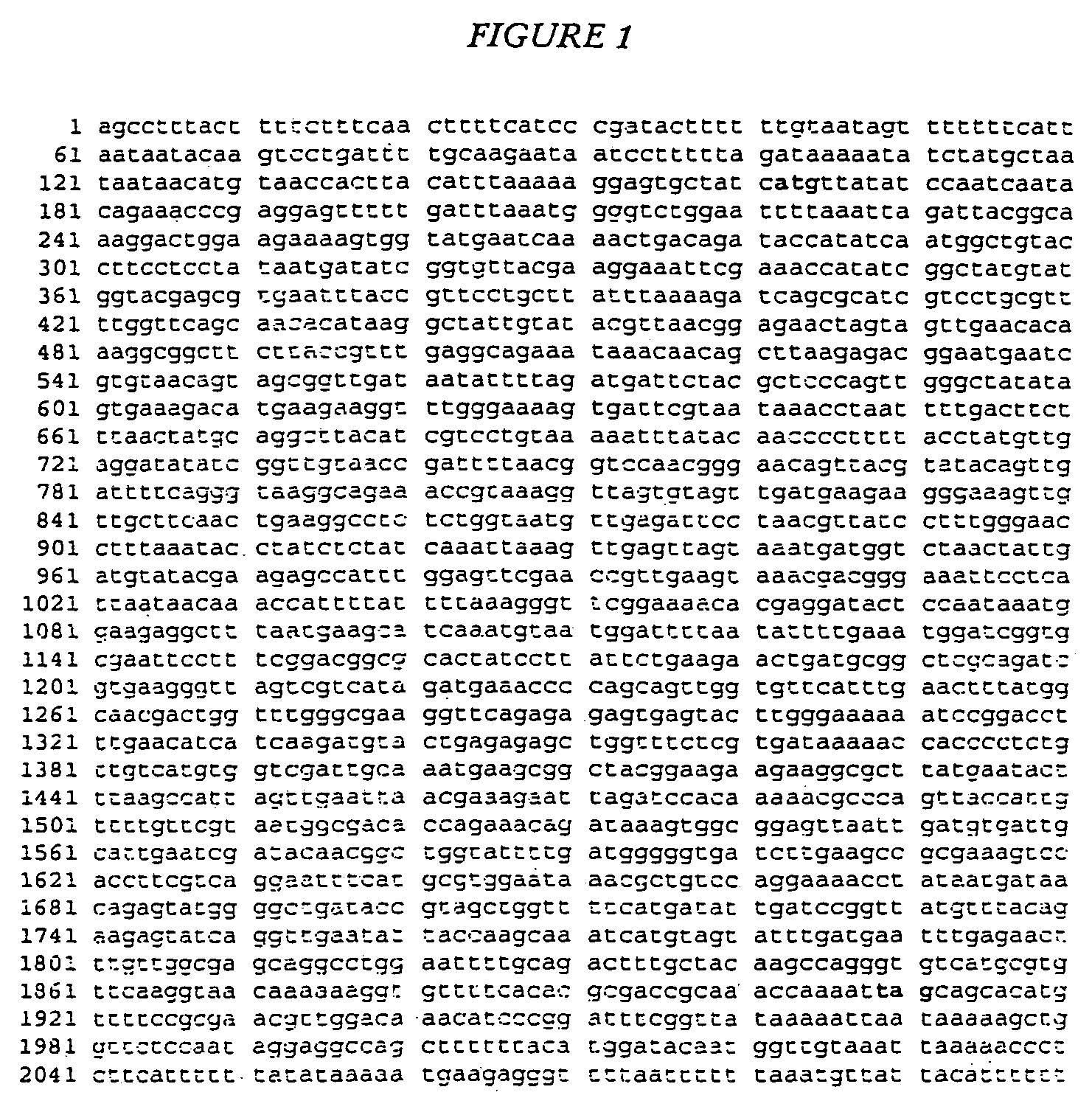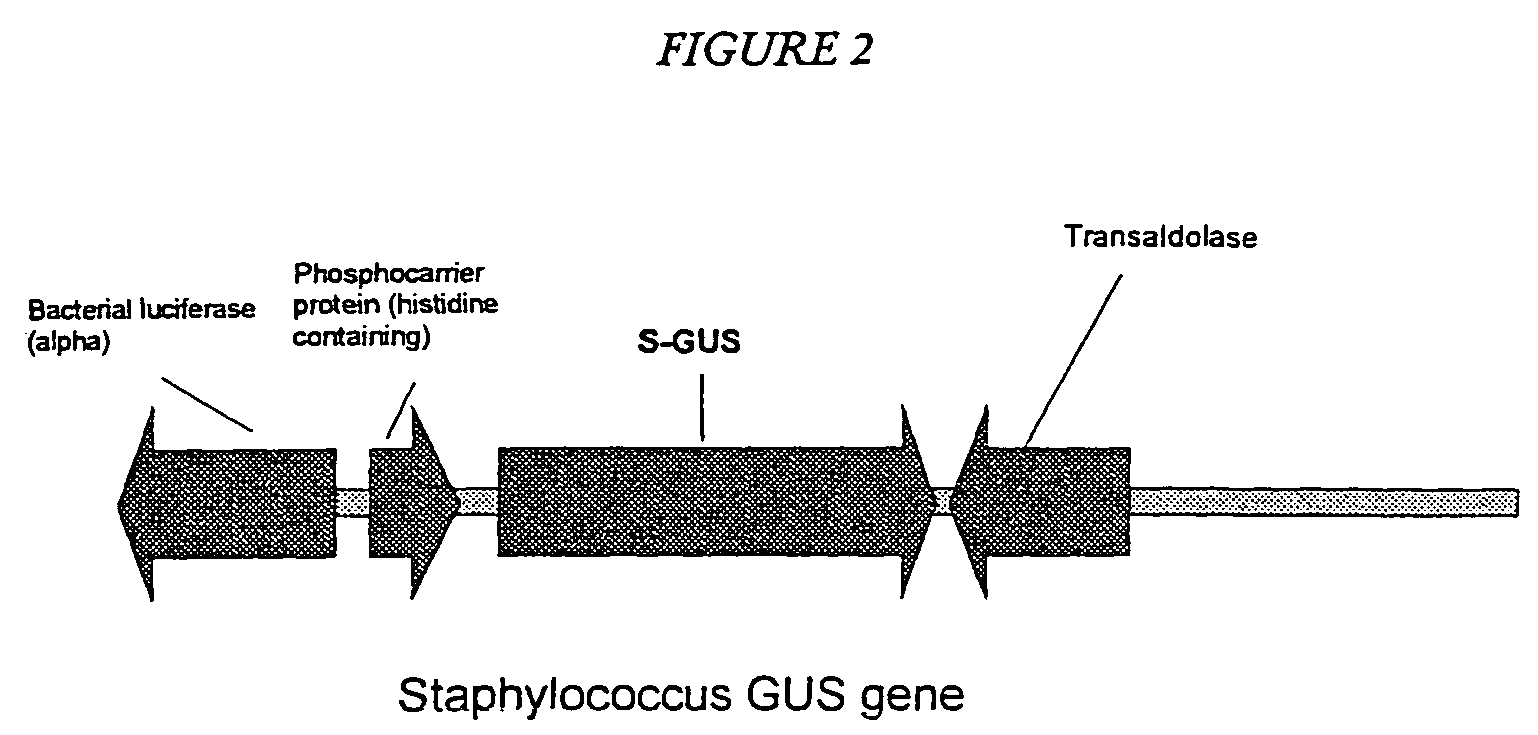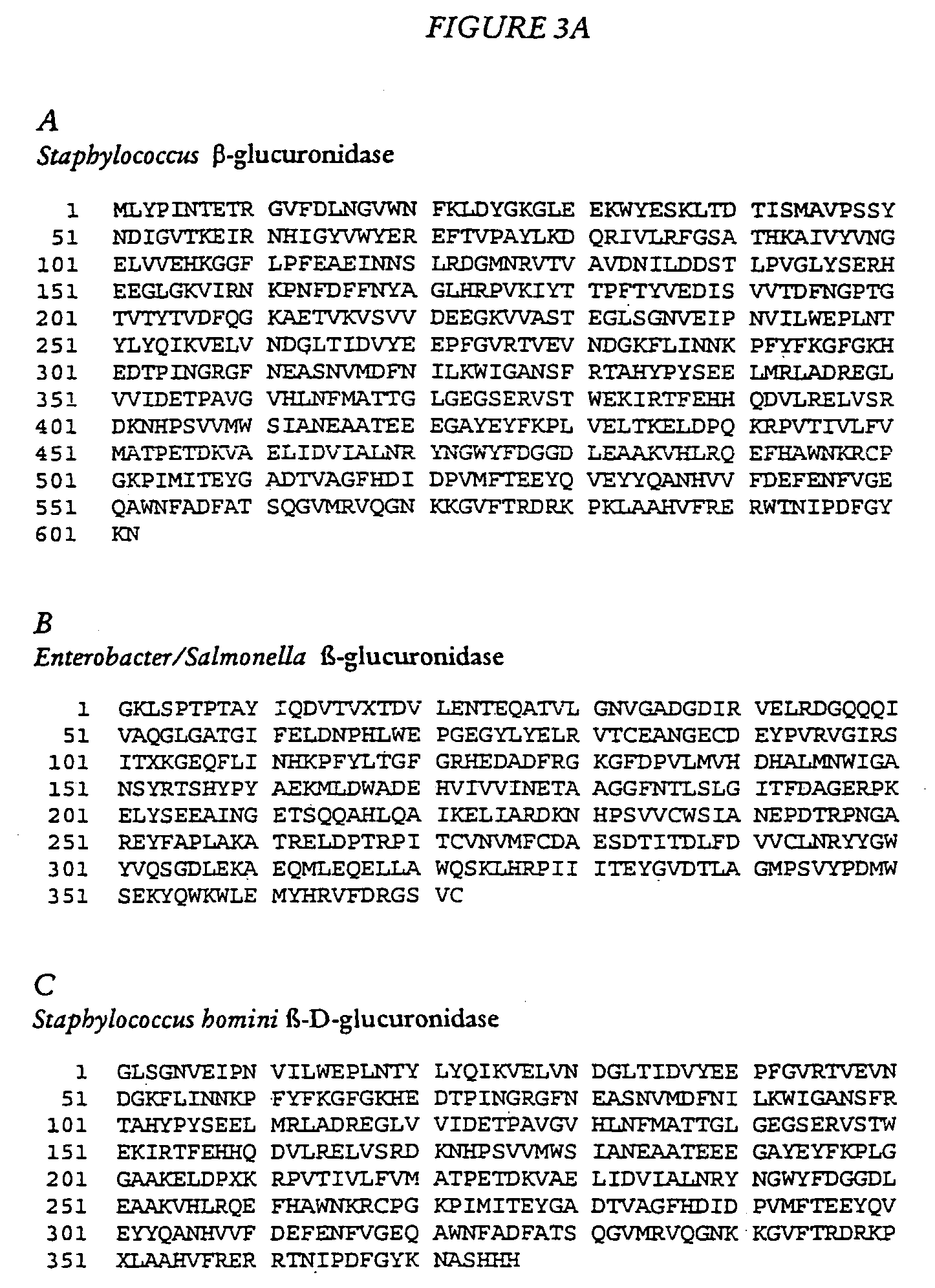Microbial beta-glucuronidase genes, gene products and uses thereof
a technology of beta-glucuronidase and gene products, applied in hydrolases, biochemistry apparatus and processes, enzymology, etc., can solve the problems of inability to induce secretion, high cost, and inability to manufacture gus for use in in vitro assays, etc., to facilitate the development of bioassays.
- Summary
- Abstract
- Description
- Claims
- Application Information
AI Technical Summary
Benefits of technology
Problems solved by technology
Method used
Image
Examples
example 1
Identification of Microbes that Express .beta.-Glucuronidase
Skin microbes are obtained using cotton swabs immersed in 0.1% Triton.RTM. X-100 and rubbing individual arm pits or by dripping the solution directly into arm pits and recovering it with a pipette. Seven individuals are sampled. Dilutions (1:100, 1:1000) of arm pit swabs are plated on 0.1.times. and 0.5.times.TSB (Tryptone Soy Broth, Difco) agar containing 50 .mu.mL X-GlcA (5-bromo-4-chloro-3-indolyl .beta.-D-glucuronide), an indicator substrate for .beta.-glucuronidase. This substrate gives a blue precipitate at the site of enzyme activity (see U.S. Pat. No. 5,268,463). TSB is a rich medium which promotes growth of a wide range of microorganisms. Plates are incubated at 37.degree. C.
Soil samples (ca. 1 g) are obtained from an area in Canberra, ACT, Australia (10 samples) and from Queanbeyan, NSW, Australia (12 samples). Although only one of the ten samples from Canberra is intentionally taken from an area of pigeon excreme...
example 2
Cloning of Gus Genes by Genetic Complementation
Genomic DNA of several candidate strains is isolated and digested with one of the following enzymes, EcoR 1, BamH 1, Hind 111, Pst 1. Digested DNA fragments are ligated into the corresponding site of plasmid vector pBluescript II SK (+), and the ligation mix is electroporated into E. coli KW1, which is a strain deleted for the complete GUS operon. Colonies are plated on LB-X-GlcA plates and assayed for blue color. Halo formation is not used as a criterium, because behavior of the GUS gene in a different genetic background may alter the phenotype or detectability. In general though, halo formation is obtained in KW1.
Isolated plasmids from GUS+ transformants are retransformed into KW1 and also into DH5.alpha. to demonstrate that the GUS gene is contained within the construct. In all cases, retransformant colonies stained blue with X-GlcA.
example 3
DNA Sequence Analysis of GUS Genes Isolated by Complementation
DNA sequence is determined for the isolates that amplified from the primers T3 and T7, which flank the pBS polylinker. Cyclic thermal sequencing was done as above, except that elongation time is increased to 4 min to allow for longer is sequence determinations. Alternatively, transposon mutagenesis was used to introduce sequencing primer sites randomly into the GUS gene (GPS kit; New England Biolabs, MA, USA).
The sequence information is used to design new oligonucleotides to obtain the full-length sequence of the clones.
TABLE-US-00002 TABLE 2 SEQ ID PRIMER BASES Tm SEQUENCE No GUS-2T 16 30.3 AYT TYT TYA AYT AYG C GUS-5B 18 49.5 GAA RTC IGC RAA RTT CCA CSW-RTSHY(F) 17 47.9 ATC GCA CGT CCC ACT AC CSW-RTSHY(R) 18 47.9 CGT GCG ATA GGA GTT AGC EH-FRTSHY(F) 22 46.1 ATT TAG AAC ATC TCA TTA TCC C EH-FRTSHY(R) 23 47.6 TGA GAT GTT CTA AAT GAA TTA GC LSB-KRPVT(R) 17 53.2 ATC GTG ACC GGA CGC TT CBP-QAYDE 17 51.1 GCG CGT AAT CTT CCT G...
PUM
| Property | Measurement | Unit |
|---|---|---|
| Tm | aaaaa | aaaaa |
| Tm | aaaaa | aaaaa |
| Tm | aaaaa | aaaaa |
Abstract
Description
Claims
Application Information
 Login to View More
Login to View More - R&D
- Intellectual Property
- Life Sciences
- Materials
- Tech Scout
- Unparalleled Data Quality
- Higher Quality Content
- 60% Fewer Hallucinations
Browse by: Latest US Patents, China's latest patents, Technical Efficacy Thesaurus, Application Domain, Technology Topic, Popular Technical Reports.
© 2025 PatSnap. All rights reserved.Legal|Privacy policy|Modern Slavery Act Transparency Statement|Sitemap|About US| Contact US: help@patsnap.com



